
Australian Blue Banded Bee / 500px Bee, Band, Blue
Proudly supporting Australian Native Bees since 1997. BREAKING NEWS: Native Bees and the Varroa Mite Crisis See our list of hive sellers. Need help with your stingless bees? Stingless bee keeping tips. Like to identify a bee you've seen? Galleries of photos & videos. Which native bees are in your area? Read our introductory guide.
A quick look at Australia native bees The Bee Store
This blue-banded bee spotted in Sydney, is a common urban garden visitor. (ABC Open contributor glanzpunkt). Watch part one of Catalyst's The Great Australian Bee Challenge on iview.
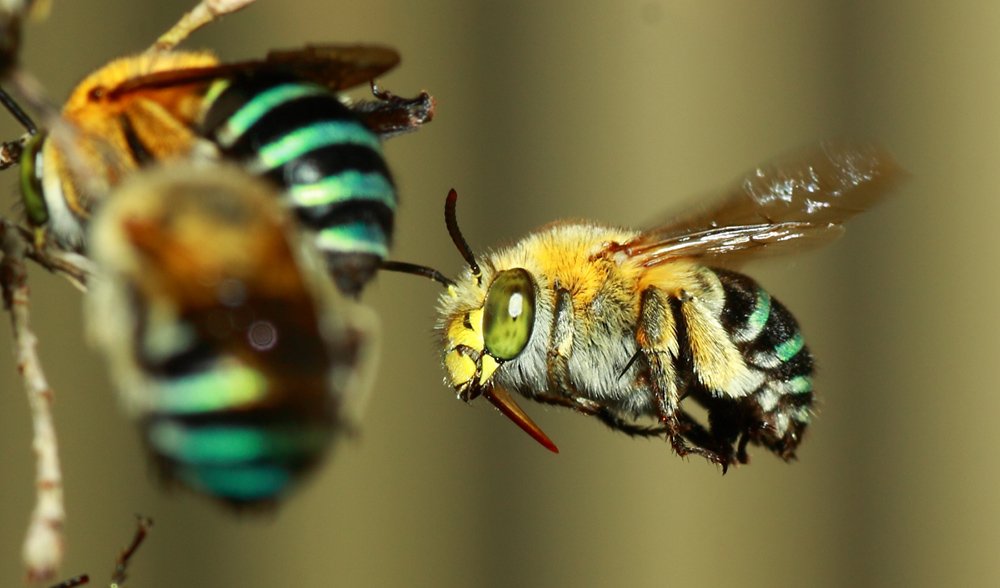
Bluebanded bee, a native beauty Australian Geographic
According to an article in ABC Science (Australia), the blue-banded bee dislodges the pollen by banging her head onto the anthers of the flower 350 times per second—a speed that's beyond my comprehension. Compare that to the bumble bee, queen of buzz pollination here in the states.

Blue banded bee (cropped) steven Flickr
There are eleven species of described blue-banded bees in Australia ranging in size from 8-14 mm. They are also known as long-tongued bees or buzz pollinators. Blue-banded bees are solitary and are found in all states of Australia except Tasmania. They have a sting but are not aggressive.
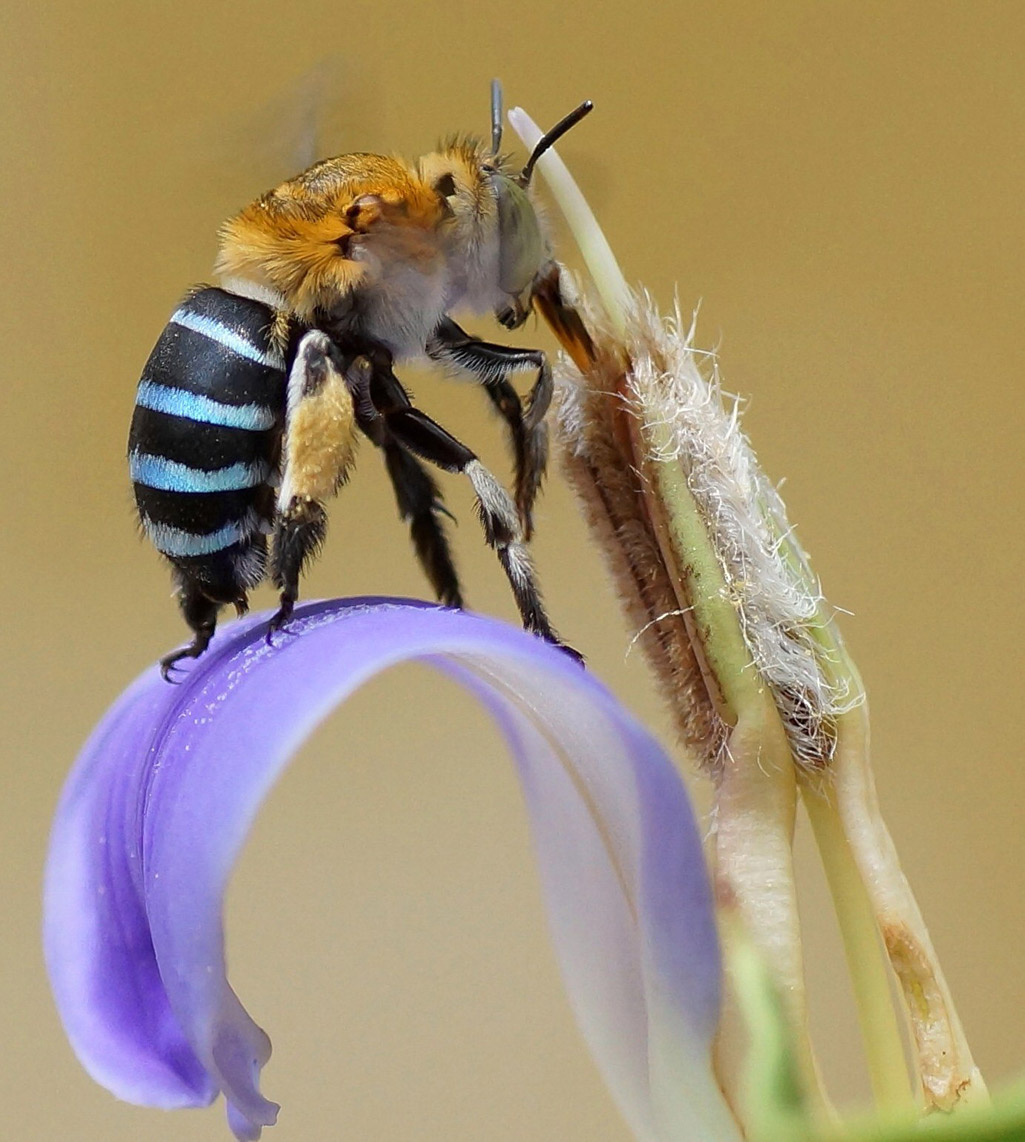
Australia's native bees Curious
Since seeing the blue banded bee in my garden, I became interested to read more about them. Here's what I've discovered: 1. Blue Banded Bees Are Native To Australia. Blue banded bees are quite different from European honey bees and are one of approximately 1,700 reported species of native Australian bee.

This incredible blue bee is sure to cheer up your day
Amegilla cingulata is a species of blue-banded bee native to Australia. Currently, several scientific organizations are conducting research on how A. cingulata benefits agriculture through its distinctive "buzz pollination". Taxonomy A. cingulata was first described by Danish entomologist Johan Christian Fabricius in 1775. [1]

Blue Banded Bee and Crane Fly up close Pollinator Link
The Blue Banded Bees are around 8-13 mm long and belong to the family Apidae. They are found Australia-wide, except for Tasmania. Erica Siegel - Blue Banded Bee 2010 Gallery. Erica Siegel - Blue Banded Bee 2011 Gallery. Videos of Blue Banded Bees. More Information on Blue Banded Bees. Free Articles on Blue Banded Bees.
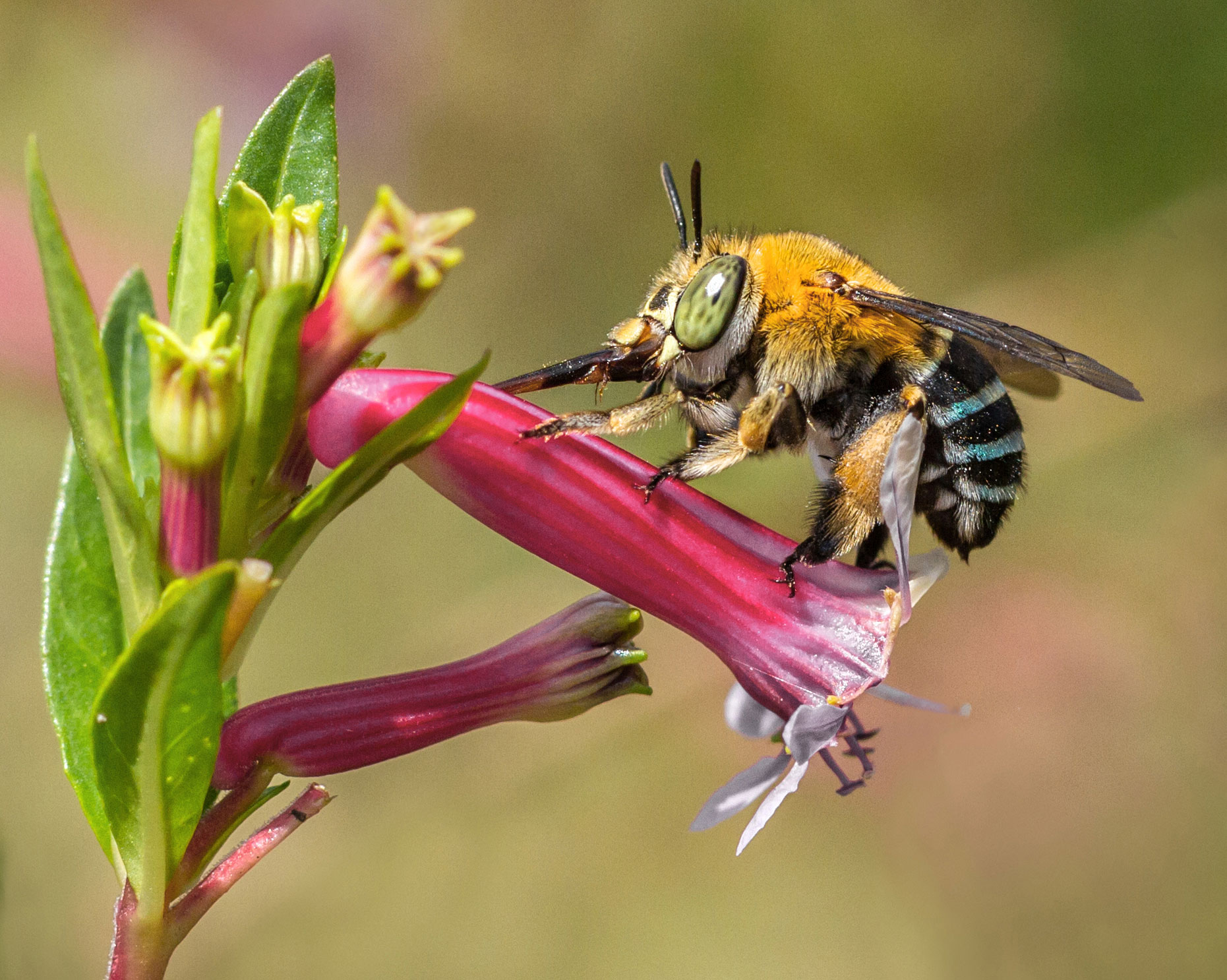
Bluebanded Bees Land for Wildlife
The blue-banded bee is a species of solitary bee that belongs to two subgenera that are indigenous to Australia, Notomegilla and Zonamegilla. Although there are approximately 252 species of blue-banded bees in the genus Amegilla, only a few actually possess blue bands on their abdomens.They are primarily those species belonging to the Notomegilla and Zonamegilla subgenera.
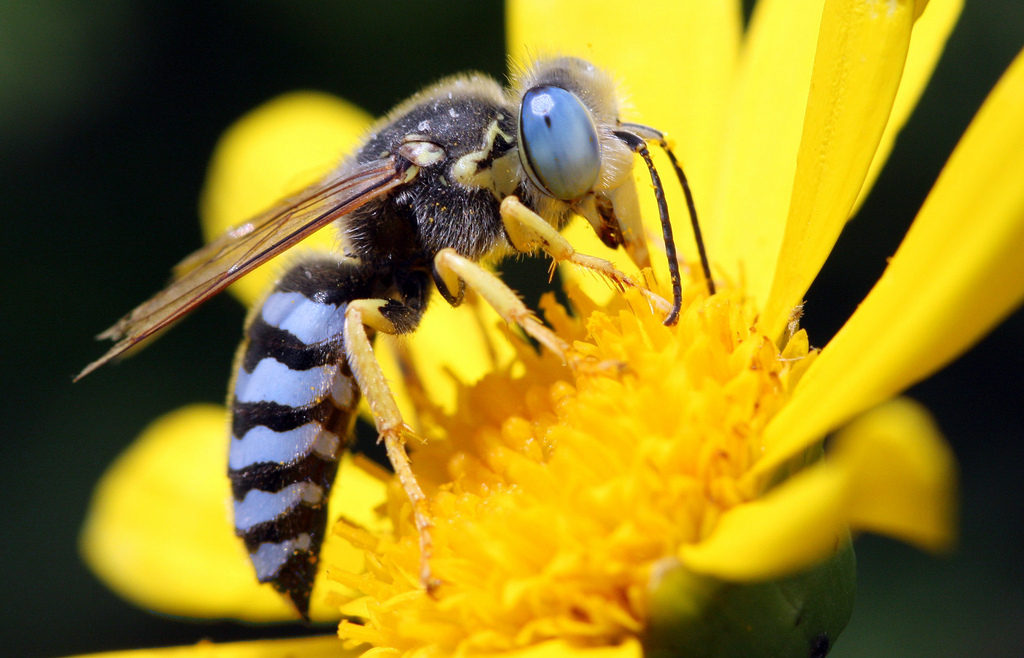
Watch Australian bluebanded bee which pollinates by 'headbanging'
Blue banded bees are debatably the most beautiful of Australia's bees - and yes, they are native to Australia! They are about 11 mm long, with a furry red-brown thorax and striking bands of metallic blue across their black abdomens; a stark contrast to the usual colourings of their relatives.

Australians in awe of native bluebanded bees found across the country Daily Mail Online
Browse Aussie Bee's spectacular galleries of Australian native bee photos - Stingless Bees, Carpenter Bees, Blue Banded Bees, Leafcutters and more. Learn to recognise the major groups in Australia.. -- Dawson's Burrowing Bee by Linda Rogan; -- Blue Banded Bee, Masked Bee by Erica Siegel; -- Banksia Bee by Michael Batley.

Blue banded bee Native species some Aussies have never heard of
Blue-banded bees are one of a few native Australian bee species that perform a particular type of pollination known as 'buzz pollination'.

THE BLUE BEE HAS RETURNED FROM ALMOST BEING ON THE VERGE OF EXTINCTION
Australian native bees are a group of bees that play a crucial role in the pollination of native plants. There are over 1,700 species of native bees in Australia, [1] ranging from small solitary bees to the social stingless bees.
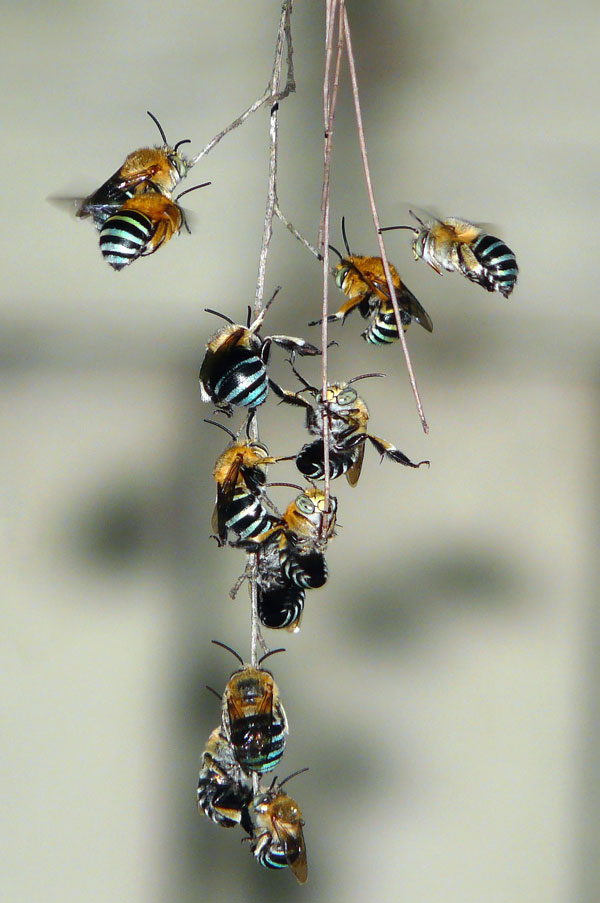
Bluebanded Bees Land for Wildlife
In Australia, the blue banded bees and the stingless bees show potential as specialist pollinators. Very few of Australia's 2,000 native bee species have been investigated so far for their potential contribution to Australian agriculture. More research into the use of Australian native bees in agriculture is urgently needed.

How to Indentify Native Bees An Interactive with Dr Terry Houston Western Australian
Blue-banded Bees are one of the most prominent native bees to visit our plants. They are slightly smaller than Australia's well-known Blowflies. Blue-banded Bees have black abdomens that have distinctive pale metallic-blue bands. Males have five complete bands and females have four. Both sexes have a dart-and-hover flight pattern.

Australian Native Bees Gardening With Angus
Lorem ipsum dolor sit amet See more Australian Native bees Below: Stingless Bees Australia has eleven species of small black stingless bees. Blue Banded Bees Blue Banded Bees are amongst our most beautiful Australian native bees. LEARN MORE Yellow & Black Carpenter Bees Yellow and Black Carpenter Bees are the largest bees in Australia.

CreatureFeature Amegilla cingulata (BlueBanded Bee) NACC Northern Agricultural
Blue banded bees (Amegilla cingulata) Blue banded bees ( Amegilla cingulata) The pretty little blue banded bee uses a special pollination method that is unique. In some flowers, the pollen is trapped deep inside the flower in a tiny capsule.